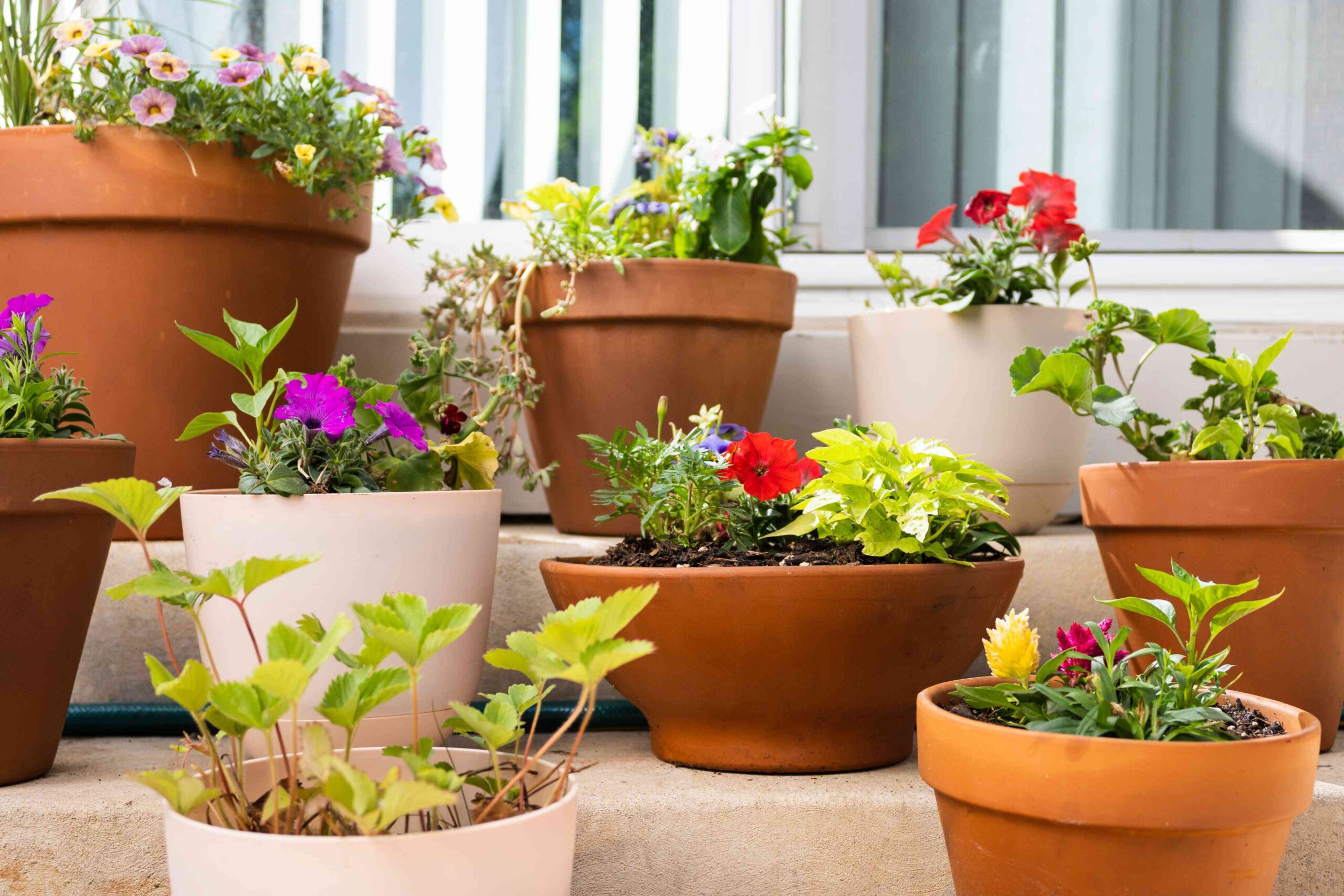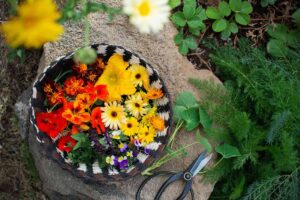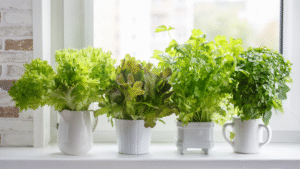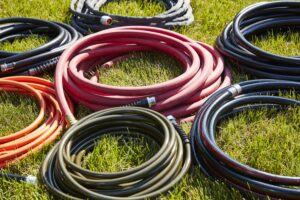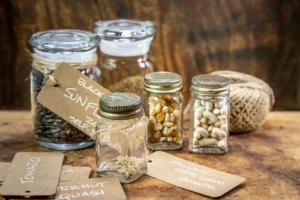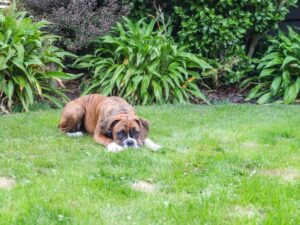Container Gardening: The Complete Guide to Growing Edibles and Ornamentals in Small Spaces
Container gardening opens up a world of possibilities for growing plants regardless of your living situation. Whether you have a small balcony, a tiny patio, or simply lack the yard space for a traditional garden, containers allow you to cultivate everything from ornamental flowers to fresh vegetables right outside your door. This versatile gardening approach can transform even the smallest spaces into vibrant, productive green oases while offering practical advantages like mobility, accessibility, and precise growing conditions. In this comprehensive guide, we’ll walk you through everything you need to know to create a thriving container garden, no matter your experience level or space constraints.
Why Choose Container Gardening?
Before diving into the how-to aspects, let’s explore the compelling reasons to start a container garden:
- Space Optimization: Grow plants vertically and horizontally in limited areas
- Mobility: Easily move plants to follow sunlight or protect from weather
- Accessibility: Raised containers reduce bending and strain for those with physical limitations
- Soil Control: Create the perfect growing medium for each plant’s specific needs
- Pest Management: Reduce ground-dwelling pest issues and simplify organic control
- Extended Growing Season: Move containers indoors/outdoors as temperatures change
- Design Flexibility: Rearrange containers to refresh your space or accommodate plant growth
- Rental-Friendly: Avoid permanent landscape changes in temporary living situations
Easy Container Gardening for Beginners
Starting a container garden doesn’t have to be complicated. Follow these fundamental steps to ensure success from day one.
Essential Container Gardening Supplies
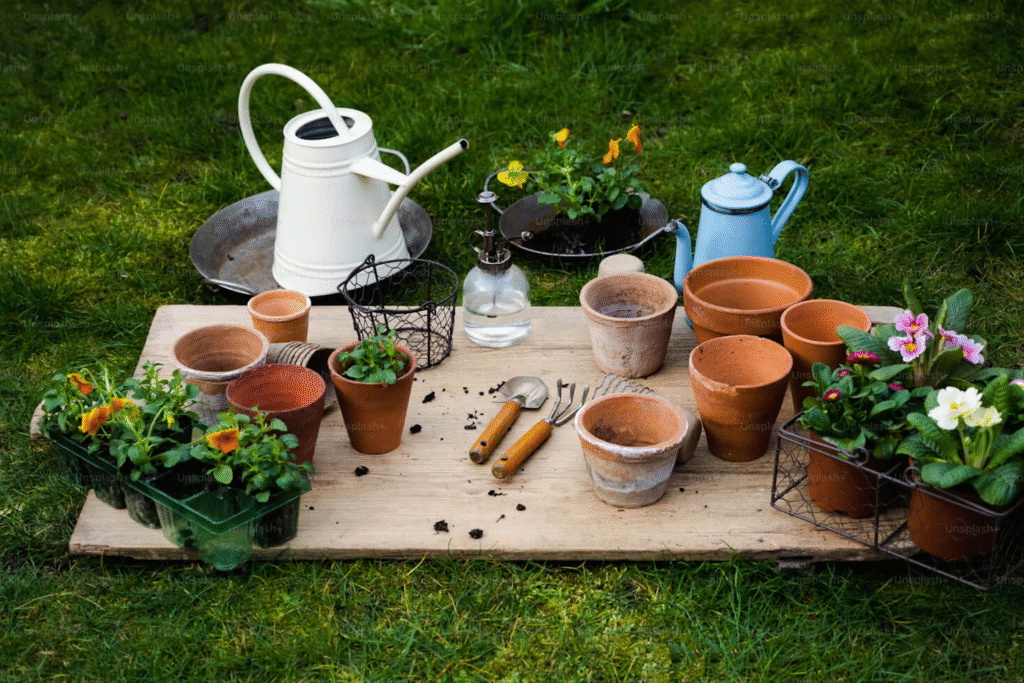
Every container gardener needs these basic materials to get started:
- Containers: Various sizes and materials (more details in the next section)
- Potting Mix: High-quality, well-draining soil designed specifically for containers
- Plants or Seeds: Selected based on your growing conditions and preferences
- Basic Tools: Trowel, pruners, watering can or hose with adjustable nozzle
- Fertilizer: Slow-release granular or liquid feed appropriate for your plants
- Drainage Materials: Broken pottery, gravel, or mesh screens for covering drainage holes
Beginner-Friendly Container Plants
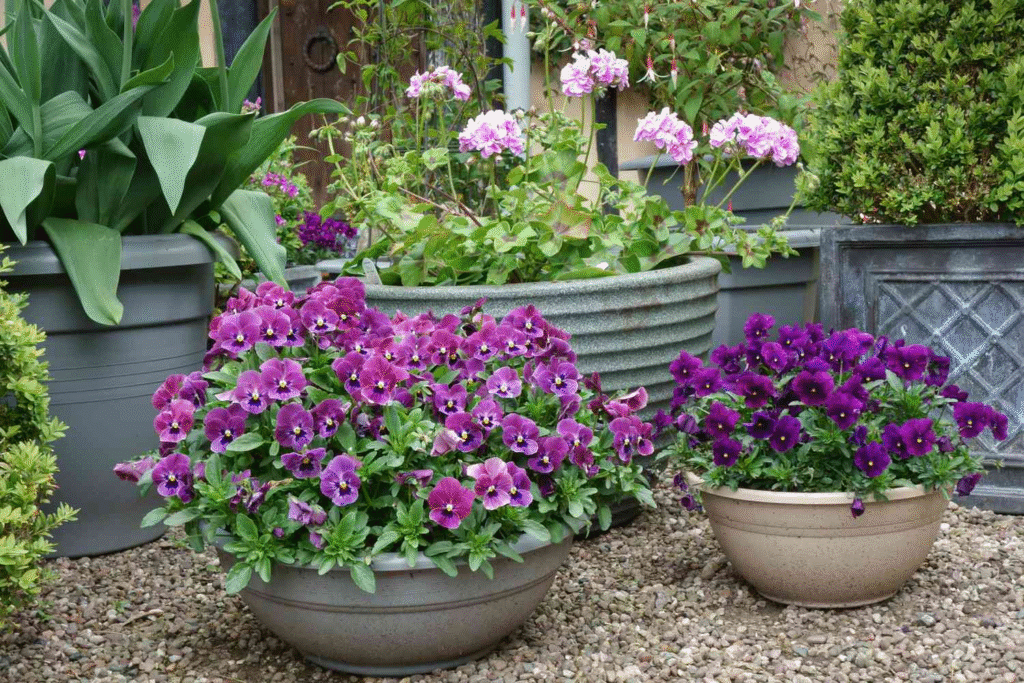
For your first container garden, consider these easy-to-grow options:
Ornamentals
- Marigolds: Bright blooms, pest-repellent properties
- Petunias: Prolific flowers in various colors
- Geraniums: Heat-tolerant with long-lasting blooms
- Succulents: Minimal watering needs, architectural interest
Herbs
- Basil: Grows quickly, loves warm weather
- Mint: Vigorous growth (best in its own container)
- Parsley: Tolerates partial shade, long productive season
- Chives: Comes back year after year in many climates
Vegetables
- Cherry Tomatoes: Compact varieties like ‘Tiny Tim’ or ‘Patio Princess’
- Leaf Lettuce: Quick-growing, can be harvested multiple times
- Bush Beans: No trellising required, productive in small spaces
- Bell Peppers: Compact plants with colorful, nutritious fruits
Beginner Container Gardening Schedule
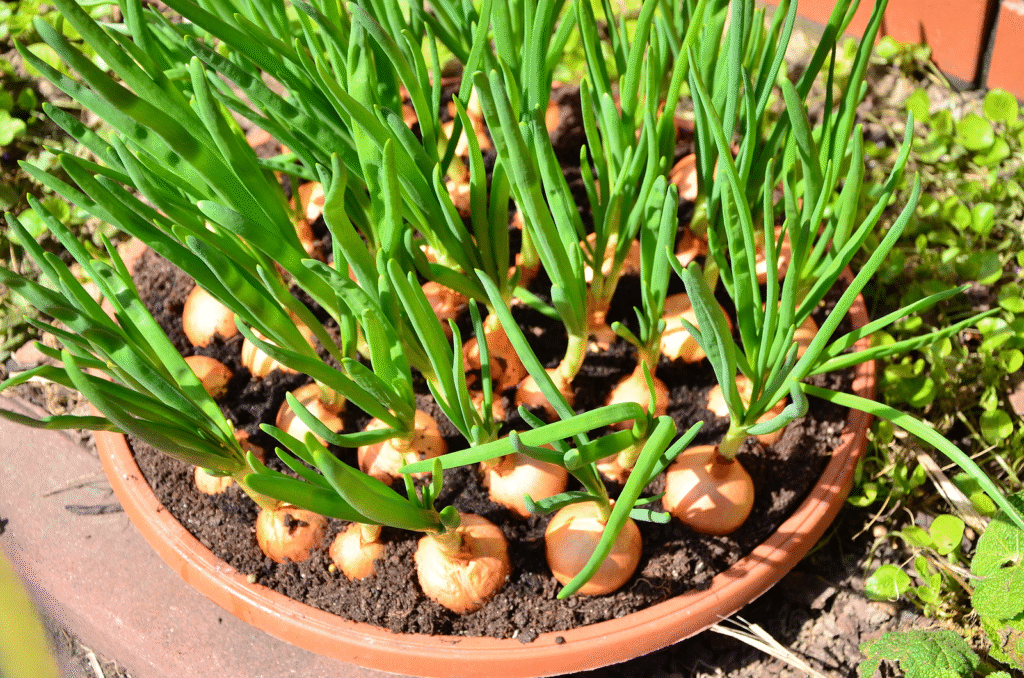
Follow this simple timeline to establish your first container garden:
- Planning (1-2 weeks before planting)
- Assess your space’s sunlight, wind exposure, and access to water
- Select appropriate containers and plants for your conditions
- Purchase supplies and prepare your space
- Setup (Planting day)
- Prepare containers with drainage and potting mix
- Plant according to spacing guidelines (don’t overcrowd)
- Water thoroughly after planting
- Establishment (First 2 weeks)
- Monitor moisture levels daily, especially in warm weather
- Protect new plantings from extreme conditions
- Begin fertilizing after plants show new growth
- Maintenance (Ongoing)
- Water when the top inch of soil feels dry
- Feed according to plant needs (typically every 2-4 weeks)
- Monitor for pests and diseases
- Harvest frequently to encourage production
Common Beginner Mistakes to Avoid
Even experienced gardeners occasionally make these container gardening errors:
- Inadequate Drainage: Always ensure water can escape from containers
- Improper Watering: Both overwatering and underwatering can harm plants
- Using Garden Soil: Garden soil compacts in containers; use potting mix instead
- Ignoring Light Requirements: Placing sun-loving plants in shade or vice versa
- Overcrowding: Plants need room to grow; follow spacing recommendations
- Forgetting to Feed: Container plants need regular nutrients as they deplete the soil
- Neglecting to Check for Pests: Early intervention prevents major infestations
Types of Container Gardening
Container gardening encompasses several approaches, each with unique benefits and aesthetic qualities.
Single Container Plantings

The simplest approach features one plant variety per container:
- Specimen Containers: Showcase standout plants with distinctive features
- Mass Plantings: Multiple containers of the same plant for dramatic effect
- Collector’s Displays: Groupings of related plant varieties (e.g., heirloom tomatoes)
Mixed Container Gardens
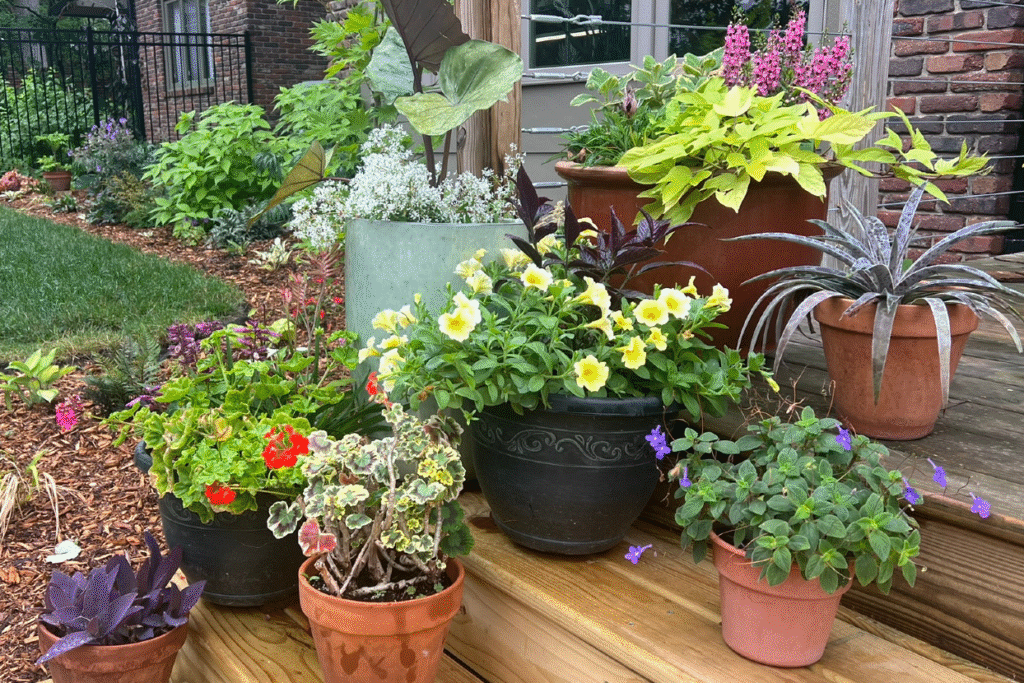
These combine multiple plant varieties in single containers:
- Thriller-Filler-Spiller Approach: Tall focal plants, mid-height fillers, and trailing varieties
- Edible Combinations: Compatible vegetables and herbs grouped by water/light needs
- Seasonal Displays: Coordinated plantings that reflect the changing seasons
- Color-Themed Containers: Plantings unified by complementary or contrasting hues
Specialized Container Systems
Advanced approaches that maximize space or address specific growing challenges:
- Vertical Container Gardens: Wall-mounted systems, tiered planters, or hanging options
- Self-Watering Containers: Designs with water reservoirs for consistent moisture
- Hydroponic Containers: Soil-free systems focusing on nutrient-rich water solutions
- Window Boxes: Narrow containers that attach to windowsills or railings
- Hanging Baskets: Suspended containers ideal for trailing plants and small spaces
Container Garden Styles
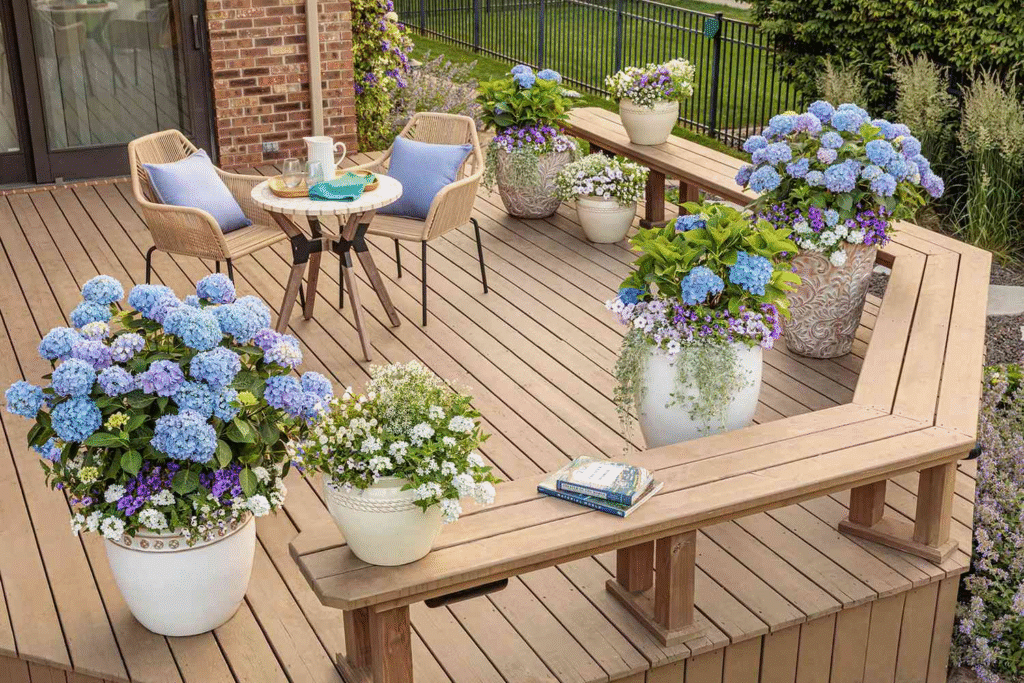
Design approaches that create a cohesive aesthetic:
- Formal Container Gardens: Symmetrical arrangements, often with clipped or structured plants
- Cottage Container Style: Relaxed, abundant plantings with mixed flowers and edibles
- Modern Minimalist: Clean lines, limited color palette, architectural plant selections
- Edible Landscape Containers: Ornamental arrangements where all components are edible
- Habitat Containers: Plantings designed to support pollinators and beneficial insects
Best Containers for Vegetable Gardening
Successful vegetable container gardening starts with selecting the right vessels for your plants.
Container Materials Compared
Each material offers different benefits for growing vegetables:
Terracotta/Clay
- Pros: Natural appearance, porous (promotes air exchange), sturdy
- Cons: Heavy, breakable, dries out quickly, can crack in freezing temperatures
- Best For: Mediterranean herbs, drought-tolerant plants, warm climates
- Size Considerations: 12-inch minimum diameter for most vegetables
Plastic
- Pros: Lightweight, affordable, retains moisture, various colors available
- Cons: Can degrade in sunlight, may leach chemicals, less stable when tall
- Best For: Moisture-loving plants, beginner gardeners, balcony gardens
- Size Considerations: 5-gallon minimum for tomatoes and larger vegetables
Fabric Pots
- Pros: Excellent drainage, prevents root circling, lightweight, foldable for storage
- Cons: Dry out quickly, can look informal, may stain surfaces beneath
- Best For: Root vegetables, plants sensitive to overwatering, temporary setups
- Size Considerations: 7-10 gallon size accommodates most vegetables
Wood
- Pros: Natural appearance, insulates roots from temperature extremes, sturdy
- Cons: Eventually decomposes, may harbor insects, can be expensive
- Best For: Mixed vegetable plantings, raised container gardens, decorative settings
- Best Woods: Cedar, redwood, cypress (avoid treated lumber for edibles)
Metal
- Pros: Modern appearance, durable, often recycled/upcycled material
- Cons: Conducts heat (can overheat soil), possible rust issues, sharp edges
- Best For: Cool-season vegetables, ornamental plantings with edible components
- Considerations: Line with landscape fabric to prevent soil contact with metal
Essential Container Features
When selecting containers for vegetables, prioritize these characteristics:
- Adequate Drainage: Multiple holes preventing waterlogged soil
- Appropriate Depth: Matching container depth to root requirements
- Sufficient Volume: Providing enough growing medium for nutrient needs
- Stability: Preventing tipping as plants grow larger
- Food-Safe Materials: Avoiding toxic compounds for edible plantings
- Insulation Properties: Protecting roots from temperature extremes
- Durability: Withstanding outdoor conditions for at least one growing season
DIY Container Options for Vegetables
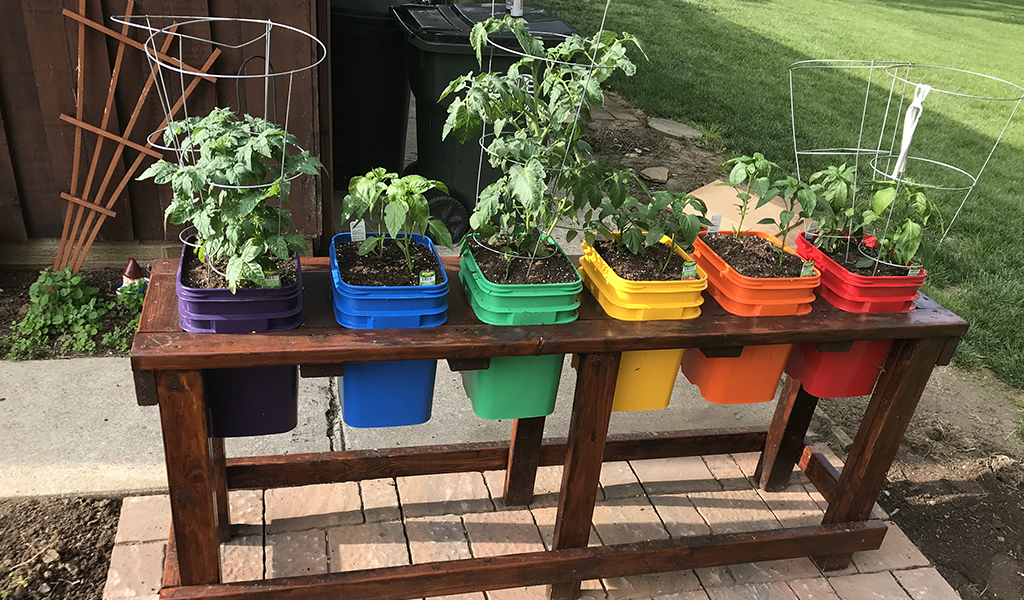
Create budget-friendly containers from repurposed items:
- 5-Gallon Buckets: Add drainage holes; ideal for tomatoes, potatoes, and cucumbers
- Storage Totes: Drill drainage holes; excellent for shallow-rooted greens and herbs
- Wooden Crates: Line with landscape fabric; perfect for lettuce and radishes
- Grow Bags: Make from landscape fabric; versatile for most vegetables
- Wine Barrels (Halved): Ready-made large containers for mixed plantings
Note: Always ensure repurposed containers are clean and free from harmful residues before planting edibles.
Vegetables Suitable for Container Gardening
Not all vegetables perform equally well in containers. Focus on these container-friendly options for the best results.
Top-Performing Container Vegetables

These vegetables consistently excel in container environments:
Tomatoes
- Best Varieties: ‘Patio Princess’, ‘Tiny Tim’, ‘Tumbling Tom’, ‘Bush Early Girl’
- Container Needs: 5-gallons minimum, sturdy cage or stake for support
- Growing Tips: Provide consistent moisture, feed regularly, place in full sun
Peppers
- Best Varieties: ‘Redskin’, ‘Sweet Banana’, ‘Jalapeño’, ‘Hungarian Wax’
- Container Needs: 3-5 gallon containers, moderate moisture
- Growing Tips: May need staking when heavily fruiting, benefit from afternoon shade in hot climates
Leafy Greens
- Best Varieties: ‘Black Seeded Simpson’ lettuce, ‘Bloomsdale’ spinach, ‘Red Russian’ kale
- Container Needs: Shallow containers (6-8″ deep), consistent moisture
- Growing Tips: Succession plant every 2-3 weeks, tolerate partial shade, harvest outer leaves for extended production
Herbs
- Best Varieties: Basil, parsley, thyme, rosemary, cilantro, oregano
- Container Needs: 6-8″ pots, well-draining soil
- Growing Tips: Group by water needs, harvest regularly to encourage bushiness
Root Vegetables
- Best Varieties: ‘Thumbelina’ carrots, ‘Cherry Belle’ radishes, ‘Golden Globe’ turnips
- Container Needs: Deep containers (12″+) for most roots, consistent moisture
- Growing Tips: Thin seedlings properly, ensure loose soil without obstruction
Cucumbers
- Best Varieties: ‘Spacemaster’, ‘Patio Snacker’, ‘Bush Champion’, ‘Salad Bush’
- Container Needs: 5-gallon minimum, trellising for some varieties
- Growing Tips: Regular harvesting encourages production, consistent moisture essential
Beans
- Best Varieties: ‘Bush Blue Lake’, ‘Provider’, ‘Mascotte’, ‘Tendergreen’
- Container Needs: 8-12″ deep container, moderate moisture
- Growing Tips: Succession plant every 2-3 weeks, harvest frequently
Container Vegetable Combinations
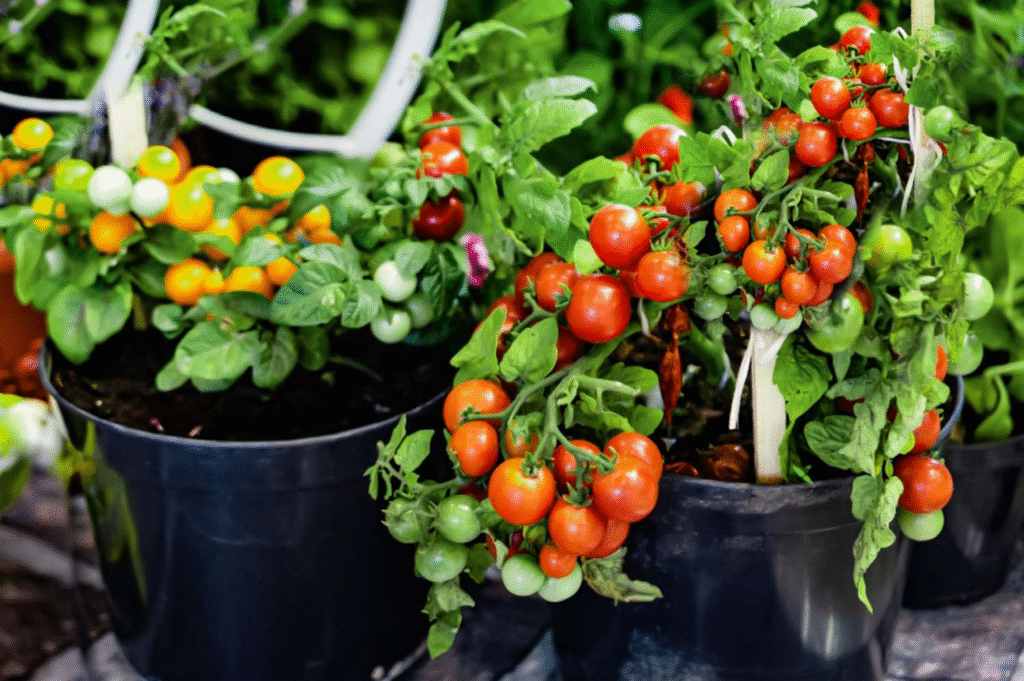
Create productive pairings in shared containers:
- Salad Container: Leaf lettuce + radishes + chives
- Mediterranean Pot: Bush tomato + basil + marigolds
- Salsa Garden: Determinate tomato + jalapeño pepper + cilantro
- Stir-Fry Mix: Bok choy + bush beans + green onions
- Root Crop Container: Carrots + radishes + green onions
Dwarf and Compact Vegetable Varieties

These space-saving cultivars were developed specifically for container growing:
- Tomatoes: ‘Micro Tom’ (6″ plants), ‘Patio Choice Yellow’ (compact determinate)
- Eggplant: ‘Fairy Tale’ (miniature fruits), ‘Patio Baby’ (compact habit)
- Peppers: ‘Redskin’ (compact habit), ‘Cajun Delight’ (dwarf plants)
- Squash: ‘Bush Delicata’ (non-vining), ‘Balmoral’ (compact zucchini)
- Cucumber: ‘Bush Pickle’ (non-vining), ‘Salad Bush’ (compact habit)
- Peas: ‘Tom Thumb’ (8″ plants), ‘Patio Pride’ (compact bush type)
Container Gardening Soil and Nutrition
The growing medium is perhaps the most critical element of container gardening success.
Potting Mix Essentials
A high-quality container growing medium should provide:
- Drainage: Allows excess water to flow through
- Aeration: Provides oxygen to plant roots
- Water Retention: Holds adequate moisture between waterings
- Nutrient Exchange: Supports the availability of plant nutrients
- Weight Consideration: Balances moisture retention with overall weight
- Stability: Maintains structure without excessive compaction
DIY Container Potting Mix
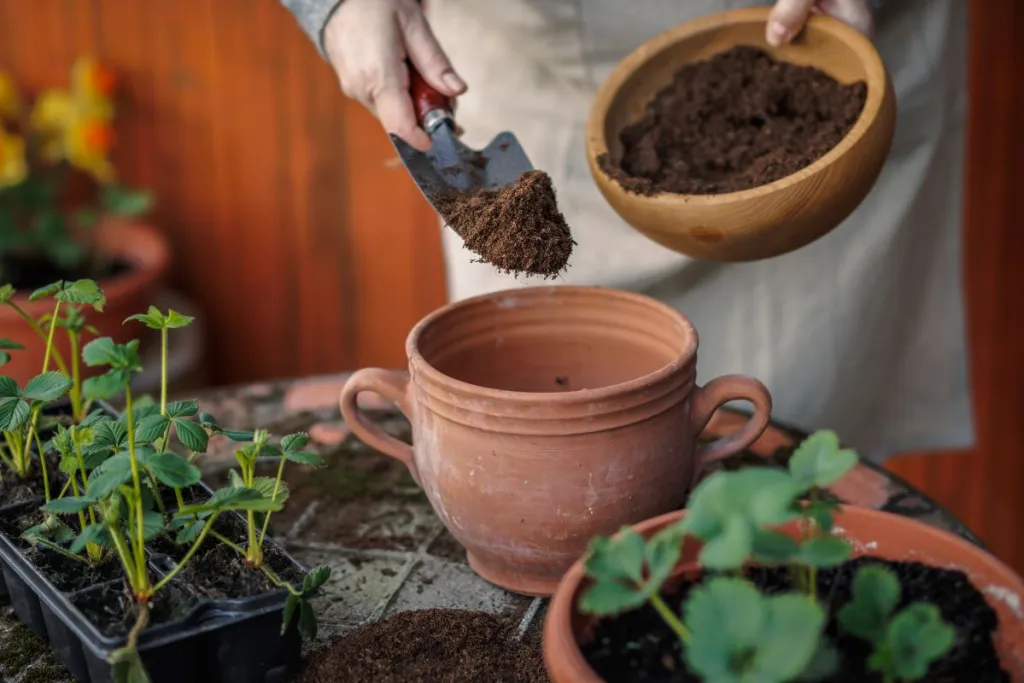
Create your own custom container growing medium with this versatile recipe:
Basic Container Mix:
- 5 parts screened compost
- 3 parts coconut coir or peat moss
- 2 parts perlite or pumice
- 1 part vermiculite
- 1 cup worm castings per gallon of mix
- Optional: 2 tablespoons slow-release organic fertilizer per gallon
Acid-Loving Plant Mix (blueberries, etc.):
- Add 1 part pine bark fines to the basic mix
- Substitute composted oak leaves for some of the regular compost
Cactus and Succulent Mix:
- 4 parts basic mix
- 4 parts coarse sand
- 2 parts extra perlite or pumice
Fertilizing Container Gardens

Container plants require more frequent feeding than in-ground plantings:
Organic Fertilizer Options
- Liquid Fish Emulsion: Fast-acting, complete nutrition (apply every 2-3 weeks)
- Worm Castings: Slow-release nutrients and beneficial microorganisms
- Compost Tea: Balanced nutrition and microbial benefits
- Granular Organic Blends: Slow-release nutrition (apply every 4-6 weeks)
Conventional Fertilizer Options
- Controlled-Release Pellets: Feed for 3-6 months with one application
- Water-Soluble Fertilizers: Quick results for nutrient-deficient plants
- Specialized Blends: Formulations for specific plant types (vegetable, tomato, etc.)
Feeding Schedule for Container Vegetables
- At Planting: Incorporate slow-release organic fertilizer into potting mix
- Early Growth: Begin liquid feeding when first true leaves appear (half-strength)
- Vegetative Growth: Full-strength liquid fertilizer every 2 weeks
- Flowering/Fruiting: Switch to bloom-formula fertilizer (higher P and K)
- Mid-Season: Replenish slow-release fertilizer for long-season crops
- Late Season: Reduce nitrogen to prevent excessive foliage at expense of fruits
Soil Management in Long-Term Containers
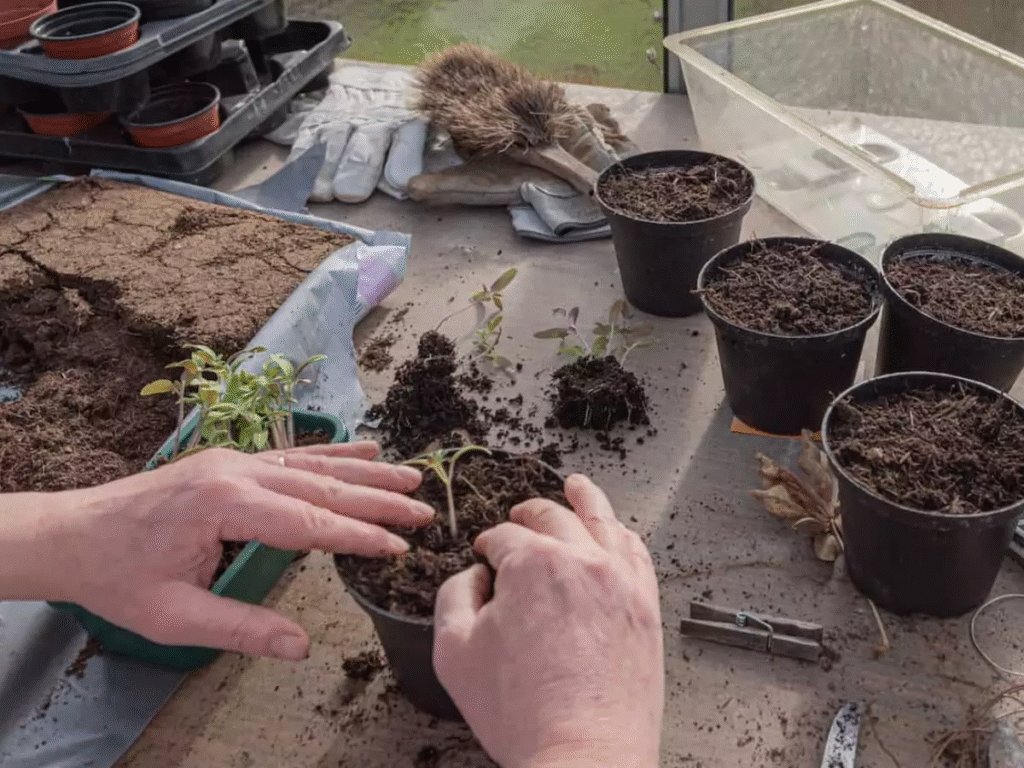
Maintain soil health in containers used for multiple seasons:
- Between Crops: Add 1-2″ fresh compost to the surface
- Annual Refresh: Replace the top third of potting mix yearly
- Complete Renewal: Replace all potting mix every 2-3 years
- Winter Care: Add mulch layer for perennial containers in cold climates
- Microbial Boosting: Apply compost tea monthly during growing season
Watering Container Gardens Effectively
Proper irrigation is critical for container gardening success, as pots dry out much faster than in-ground plantings.
Container Watering Principles
Follow these guidelines for effective container irrigation:
- Check Frequency: Daily in summer, less often in cooler weather
- Timing: Morning watering reduces evaporation and disease risk
- Thoroughness: Water until it flows from drainage holes
- Consistency: Maintain even moisture; avoid cycles of drought and flooding
- Directed Watering: Apply water to soil, not foliage
- Water Temperature: Room temperature water prevents plant shock
Signs of Water Issues
Monitor your container plants for these indicators:
Underwatering Signs:
- Wilting despite cool temperatures
- Dry, crusty soil surface
- Yellowing, then browning leaf edges
- Slow growth, poor flowering/fruiting
- Leaf drop, starting with oldest leaves
Overwatering Signs:
- Yellowing leaves throughout plant
- Wilting despite moist soil
- Foul odor from soil
- Fungus gnats present
- Root rot (dark, mushy roots)
Self-Watering Container Options
These systems reduce watering frequency and provide consistent moisture:
- Reservoir Containers: Built-in water storage with wicking mechanisms
- Wicking Systems: Fabric strips drawing water from external reservoirs
- Ollas: Buried unglazed clay pots that slowly release water
- Bottle Irrigation: Inverted bottles with controlled water release
- Capillary Mats: Absorbent materials that hold and release moisture
Water Conservation for Container Gardens

Reduce water usage with these effective strategies:
- Mulch Application: 1-2″ layer of organic mulch reduces evaporation
- Grouping Containers: Creates humid microclimate, reducing water loss
- Wind Protection: Sheltering containers from drying winds
- Time-of-Day Watering: Early morning or evening to minimize evaporation
- Water Collection: Rain barrels or diversion systems for irrigation
- Hydrogels: Water-absorbing polymers that release moisture gradually (use sparingly)
Container Garden Design Principles
Create visually appealing container gardens through thoughtful design approaches.
Container Placement Strategies
Position your containers for both practical function and visual impact:
- Traffic Patterns: Place herbs and vegetables near kitchen access
- Visibility: Position decorative containers where they can be appreciated
- Microclimates: Identify protected spots for tender plants
- Repetition: Create rhythm with repeated container styles or plant combinations
- Focal Points: Use distinctive containers or standout plants as design anchors
- Layering: Arrange containers at varying heights for visual interest
- Seasonal Sun Tracking: Account for changing sun patterns throughout the year
Container Garden Color Theory
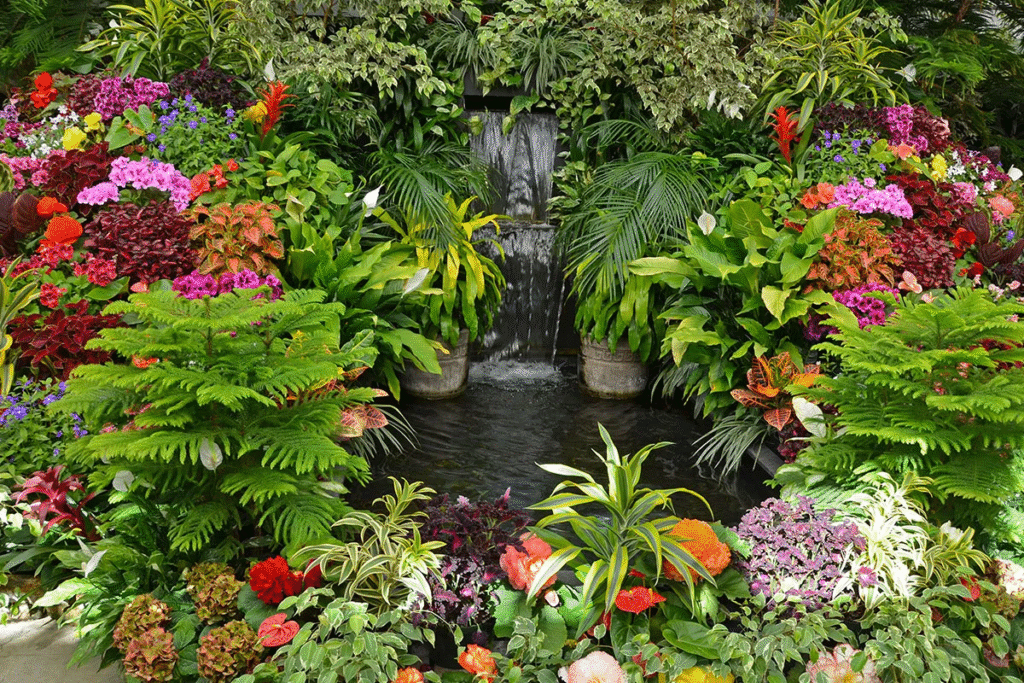
Apply color principles to create harmonious plantings:
- Monochromatic Schemes: Variations of a single color for sophisticated impact
- Complementary Colors: Opposite hues on the color wheel for vibrant contrast
- Analogous Palettes: Adjacent colors for harmonious transitions
- Warm vs. Cool: Color temperature influences spatial perception
- Foliage Consideration: Leaf color and texture as important as flowers
- Seasonal Shift: Planning for color evolution throughout growing season
Container Combinations for Year-Round Interest

Design for continuous visual appeal:
- Spring Containers: Bulbs + cool-season veggies + early-blooming perennials
- Summer Displays: Heat-tolerant annuals + productive vegetables + textural grasses
- Fall Arrangements: Ornamental cabbage + chrysanthemums + herbs + fall-colored perennials
- Winter Interest: Evergreens + berried plants + structural elements + colorful stems
Space-Maximizing Container Designs

Make the most of limited area with these approaches:
- Vertical Growing Systems: Wall-mounted planters, tiered stands, trellised crops
- Hanging Opportunities: Suspended baskets, railings, overhead structures
- Stackable Containers: Purposely designed or improvised multi-level systems
- Corner Utilization: Custom-fitted triangular planters or graduated arrangements
- Under-Planting: Combining plants with different height requirements
- Espalier Techniques: Training fruiting plants against walls or structures
Container Garden Maintenance
Keep your container garden thriving with proper ongoing care.
Seasonal Container Care Calendar

Adjust maintenance routines throughout the year:
Spring
- Clean and sanitize previous season’s containers
- Prepare fresh potting mix
- Start seeds or purchase transplants
- Monitor for late frost protection needs
- Begin regular feeding program
Summer
- Increase watering frequency
- Apply mulch to retain moisture
- Harvest regularly from edible containers
- Monitor for pest and disease issues
- Deadhead flowers to extend blooming
- Provide shade for heat-sensitive plants
Fall
- Reduce fertilization
- Harvest final crops
- Transition to cool-season plantings
- Prepare tender perennials for overwintering
- Clean and store emptied containers
Winter
- Move vulnerable containers to protected locations
- Insulate perennial containers
- Water sparingly but prevent complete drying
- Plan next season’s container gardens
- Order seeds and supplies
- Repair or replace damaged containers
Common Container Garden Issues and Solutions
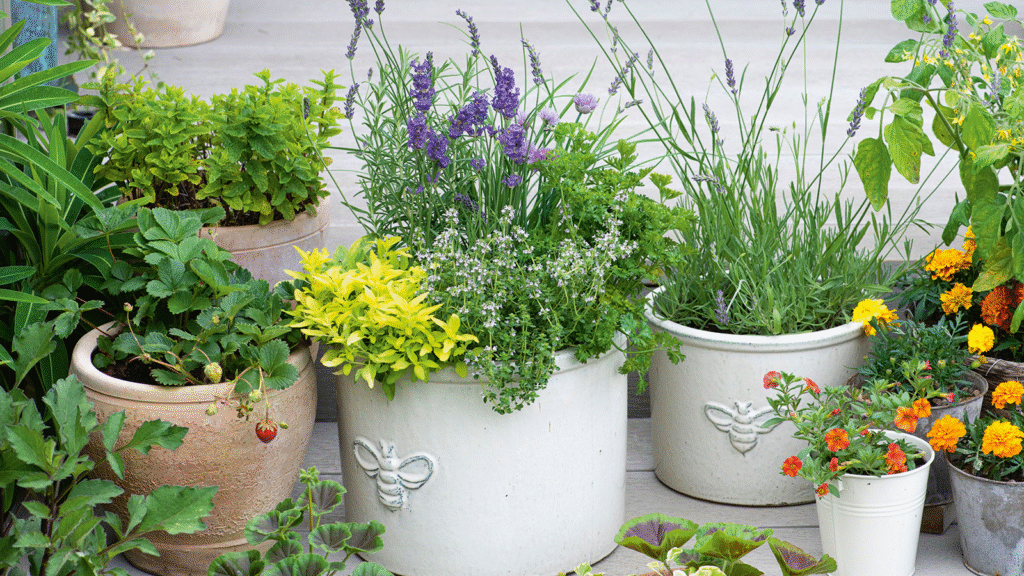
Address these typical container garden problems:
- Leggy Growth
- Cause: Insufficient light
- Solution: Relocate to sunnier spot, prune to encourage bushiness
- Poor Flowering/Fruiting
- Cause: Incorrect fertilizer (too high nitrogen)
- Solution: Switch to bloom-formula fertilizer higher in phosphorus and potassium
- Container-Bound Roots
- Cause: Plant outgrowing its container
- Solution: Transplant to larger container, root prune if appropriate
- Soil Compaction
- Cause: Aging potting mix, overwatering
- Solution: Replace or amend soil, add organic matter
- Disease Spread
- Cause: Poor air circulation, overhead watering
- Solution: Space containers properly, water at soil level
Long-Term Container Garden Success
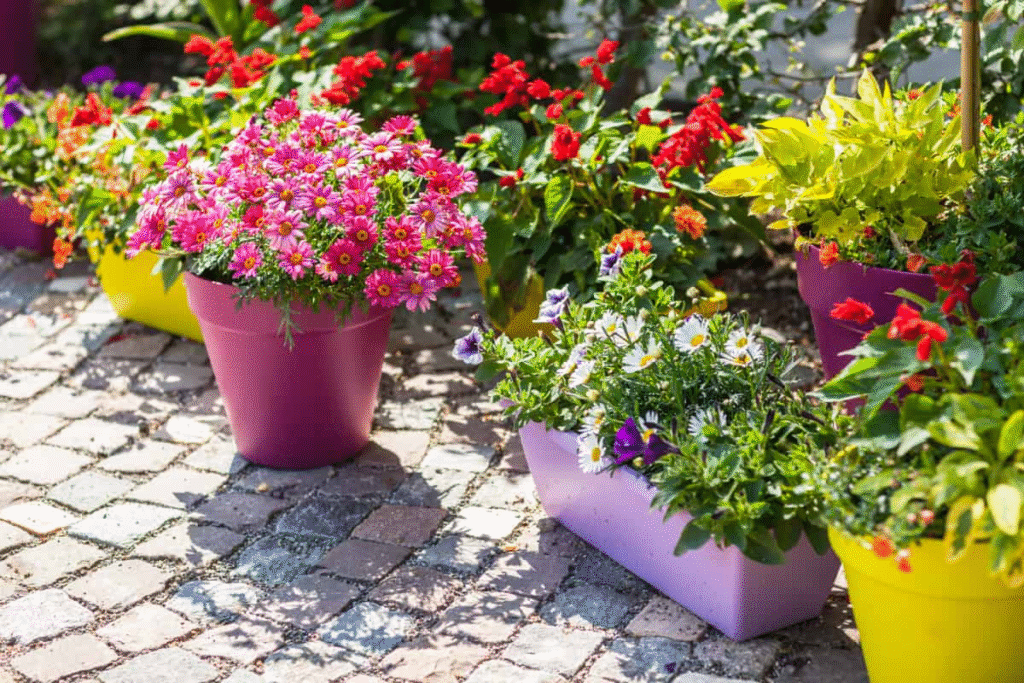
Implement these practices for sustainable container gardening:
- Crop Rotation: Change what grows in each container yearly
- Soil Management: Regular testing and amendment of container soil
- Tool Sanitation: Clean tools between plants to prevent disease spread
- Record Keeping: Document successes and failures for future reference
- Companion Planting: Utilize plant synergies for pest management and productivity
- Seed Saving: Collect seeds from successful plants for future seasons
Project Showcase: Three Successful Container Gardens
Urban Balcony Vegetable Garden

Site Conditions: Full sun (6+ hours), windy, limited space (6′ x 3′ balcony) Design Approach: Vertical emphasis with railing planters and stacked containers Key Plants:
- 2 determinate tomatoes (‘Bush Early Girl’)
- 4 pepper plants (‘Lunchbox’ series)
- Mixed lettuces and herbs in railing planters
- Pole beans on space-saving trellis
Special Features:
- Self-watering containers to reduce maintenance
- Solar-powered drip irrigation system
- Movable container placement to adjust for seasonal sun angles
Result: 47 pounds of produce from 24 square feet over one growing season
Suburban Patio Herb and Flower Mix
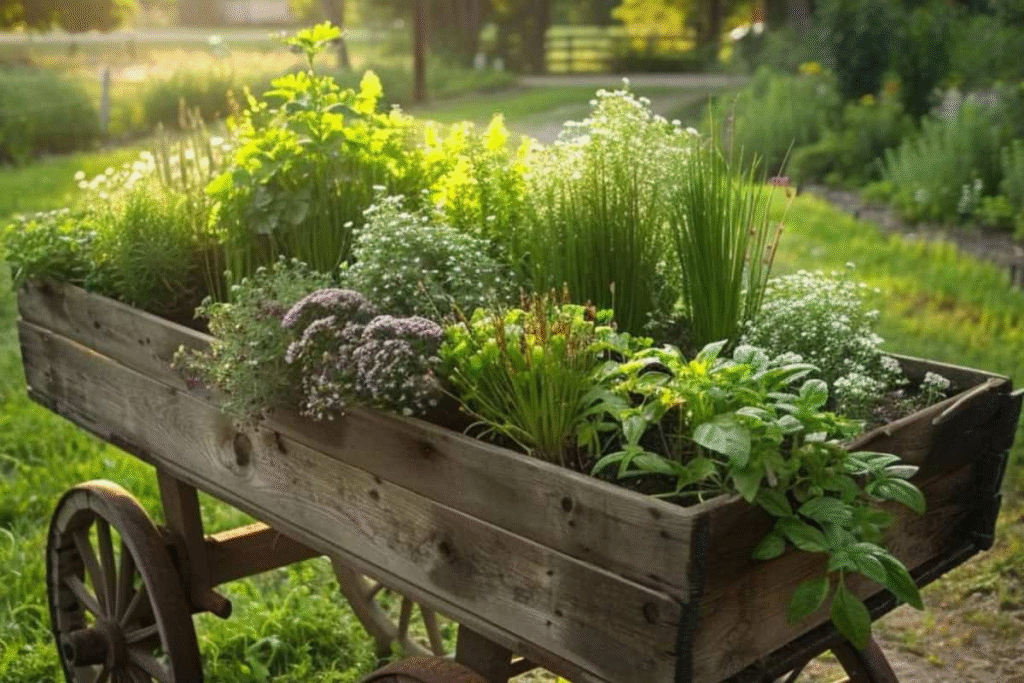
Site Conditions: Part sun (4-5 hours), protected from wind, clay paving Design Approach: Mixed ornamental and edible containers with coordinated color scheme Key Plants:
- Cascading herbs (thyme, oregano) in hanging baskets
- Culinary sage, rosemary and lavender in terracotta pots
- Annual flowers (calendula, nasturtium) for both beauty and edible blooms
- Dwarf blueberry bushes as anchor plants
Special Features:
- Terra cotta color theme with varied container shapes
- Plants arranged by water needs for efficient irrigation
- All plants either edible or beneficial for pollinators
Result: Year-round herb harvest, abundant pollinators, consistently attractive outdoor dining area
Accessible Raised Container Vegetable Garden

Site Conditions: Full sun, wheelchair access needed, limited mobility gardener Design Approach: Elevated containers at optimal working height (30-36″) Key Plants:
- Vegetable varieties selected for continuous harvest
- Cherry tomatoes (‘Sunsugar’)
- Compact zucchini (‘Astia’)
- Cut-and-come-again greens
- Bush beans and herbs
Special Features:
- Custom-height container supports with wheelchair clearance
- Drip irrigation with accessible controls
- Extended tool handles for reduced reaching
- Sensory elements (fragrant herbs, varied textures)
Result: 32 weeks of harvest with minimal assistance, improved quality of life for gardener
Conclusion: The Evolving Joy of Container Gardening
Container gardening represents one of the most accessible and adaptable approaches to cultivating plants. It allows anyone—regardless of space limitations, physical abilities, or gardening experience—to experience the profound satisfaction of growing something with their own hands. As your container garden develops, you’ll discover that these miniature ecosystems offer not just beauty and harvests, but also valuable lessons about adaptability, observation, and the rhythms of the natural world.
Beyond the practical benefits of fresh produce and beautiful surroundings, container gardening connects us to the essential human practice of tending growing things. Each time you notice a new leaf unfurling, harvest a sun-warmed tomato, or observe pollinators visiting your flowering containers, you participate in a tradition as old as human civilization itself.
By starting with the fundamentals outlined in this guide and allowing yourself to experiment and learn from both successes and challenges, you’ll develop a container gardening approach uniquely suited to your space, lifestyle, and preferences. Whether you’re growing a few herbs on a city windowsill or managing dozens of vegetable containers on a suburban deck, the principles remain the same: provide appropriate growing conditions, observe closely, and respond to your plants’ needs.
Remember that container gardening, like all forms of gardening, is never truly “finished.” Each season brings new possibilities for creativity, experimentation, and growth—not just for your plants, but for you as a gardener. Embrace the journey of learning and discovery that container gardening offers, and you’ll find that even the smallest growing spaces can yield abundant rewards.
